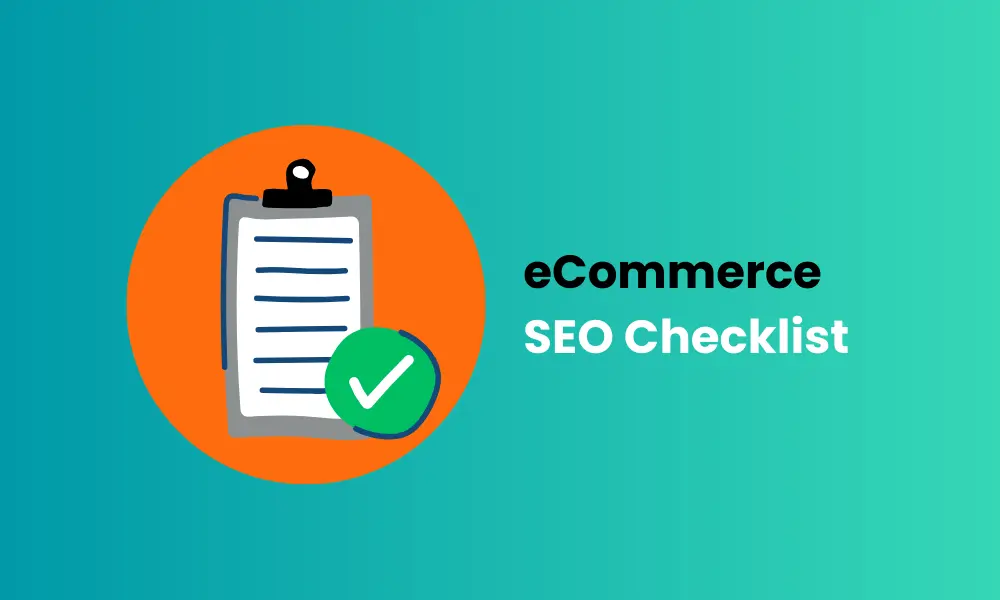
28-Point eCommerce SEO Checklist To Attract Relevant Traffic
Table of Contents
So much of business is done online nowadays.
Yet, you can so easily overlook an important fact. Your small eCommerce business will succeed or fail by how well you understand – or don’t understand – the needs of visitors, who land on your site. If you can’t address their needs, you are not going to make the kind of sales you need to sustain high growth.
Success in small business SEO for eCommerce is largely dependent on the needs of your visitors, as well as on the way you optimise your products to their questions.
Your eCommerce site will rank at the top spots of Google’s organic search results only if your webpages are highly optimised.
This comprehensive ecommerce SEO checklist will help you get started in optimising your online store.
ecommerce Keyword Research
1. Collect Your Core Business Keywords
Keyword research is the first step in eCommerce business SEO. Your core business category, subcategory & product terms will form the basis for your keyword research efforts.
You need to be careful here. If you get your core business terms wrong, you can easily get your keywords wrong.
To put together a keyword research document for your ecommerce niche, start with these three things:
- Brainstorm with your team to arrive at 10-15 key terms that describe your product categories & subcategories. If you have too many product categories, this number may be higher.
- Use one or two paid SEO Tools to research keywords, using your Brainstorm list as a set of Seed (Main) keywords. SE Ranking is a reliable, all-rounder, low-cost tool, whereas SEMRush and Ahrefs are fantastic but expensive SEO tools.
- Refer to your Site’s Google Search Console Data to list out queries Google is already ranking your Site for. This is valuable information and should be appropriately leveraged in any small Business SEO strategy.
2. Analyse Top Competitor Keywords
Spying on your competition is a proven business SEO strategy. Once you have your list of core business keywords ready, it’s time to identify your top competitors.
Finding them should be easy enough. A simple Google search for your chosen keywords will help you identify the eCommerce Businesses that rank in the top 10 for your chosen keywords.
It’s also possible that websites other than eCommerce stores may be targeting some of your prime keywords. You will see that a few particular stores show up in most of your searches.
You’ll need to add relevant stores to your list of competitors. The next step is to analyse their web stores in the SEO Intelligence Tool/s of your choice.
Add the list of high-volume, low-difficulty keywords from these lists.
When you’re creating your list, it helps to think like a shopper.
3. Map Keywords from the Final List To the Target Business Pages
Keyword lists tend to be messy. A list will typically contain keywords with every small variation of each particular query that shoppers spontaneously key into the search box.
Example – The Term “Leather Sofas” has a wide range of variations as a primary keyword
Leather Sofas
Leather Sofa
Sofa Leather
Leather Sofas on Sale
Sale Leather Sofas
….and so on.

You need to be extra careful here. It’s important to organise your target keywords into groups, based on product categories and sub-categories. This process is called Keyword mapping. It allows you to intelligently and strategically map keywords to various site pages.
Remove the keywords that are not relevant to your business. You certainly should not be targeting the wrong keywords as this could prove detrimental to the Business.
Finally, organise the keywords based on business priority, search volumes, and ranking difficulty.
On-Site ecommerce SEO Checklist
4. Install Google Analytics 4 (GA4)
eCommerce stores thrive on data. And Google Analytics is the best free tool you can use to track everything that happens on your online store.
It can easily be the most powerful tool in your digital toolbox. It’ll provide you with all the information you need to measure customer data and improve conversions.
Google Analytics 4 or GA4 will also help you measure how your SEO tactics stack up over time.
GA4 presents you with fresh insights into which visitors arrived at your store, which queries drive the most amount of traffic, and the demographic and behavioural elements of site visitors.
You can also view the traffic coming to your store by channel (Organic, Social, Paid), and set up and measure goals important for the Business.
Finally, the real power of Analytics comes from being able to apply segmentation to your data, and slice and dice it in various ways.
5. Add Your eCommerce Business Site to Google Search Console
Google Search Console is a free tool from Google that gives you numerous ways to check the performance of your store.
This tool shows you the pages on your site that Google has indexed, any issues with mobile usability, page experience, structured data, number of internal & external links, and so on.
Most importantly, you can view search queries that bring traffic to your store via this tool.
Adding Google Search Console to your eCommerce store takes only a few steps. The video below details 7 ways in which you can verify your site ownership for a Google Search Console Account.
6. Ensure Your Site Has a Logical Site Structure
Site structure refers to how the different site pages are organised. This includes the Home Page, Category, Subcategory, and other related pages on your store.
Your site structure allows Search Engine algorithms to find and crawl the most relevant content on your site, and match it appropriately with a Searcher’s query.
When your eCommerce store has a logical structure, shoppers can find their way more easily. Also, Google spiders can index your URLs better.
Navigation menu, categories, tags, internal links, breadcrumbs, and site filters are the most important tools to help optimise the structure of your ecommerce store.

7. Secure the Site with an SSL Certificate
SSL, the abbreviation of Secure Sockets Layer, is an advanced encryption protocol that safeguards browser sessions and keeps them secure.
When you secure your eCommerce store with an SSL certificate, hackers will not be able to access or “eavesdrop” on the activities on your web store.
This ensures that malicious parties cannot steal sensitive information such as credit card or debit card data, from your store.
An SSL certificate also prevents fraudsters from creating a fake version of your store and gaining user trust. From a shopper’s perspective, HTTPS makes your store more trustworthy.

8. Create SEO-Friendly URLs
URL is the abbreviation of Uniform Resource Locator. Small eCommerce business SEO isn’t dependent on any one factor.
It’s a combination of several factors that come together to collectively boost your online presence.
Although URLs are not the single most valuable element of your web store, they are the first thing that search spiders look at when they inspect your store.
So, your URLs are one of the first few elements on your eCommerce store that you need to get right.
Remember, you create SEO-friendly URLs to improve SEO ranking signals and offer clean URLs to your site visitors.
9. Check the Markup Validity of Web Documents in HTML
A Markup Validator helps check the validity of your web documents. HTML (Hypertext Markup Language) and XHTML (Extensible Hypertext Markup Language) are the two markup languages that are typically used to write most web documents.
Numerous technical specifications define the machine-readable formal vocabulary and grammar of these languages.
The act of checking a web document against these restrictions is known as validation. Validating web documents improves their quality dramatically.
You will need a Web-Developer to help you fix any issues related to the Site Markup code.
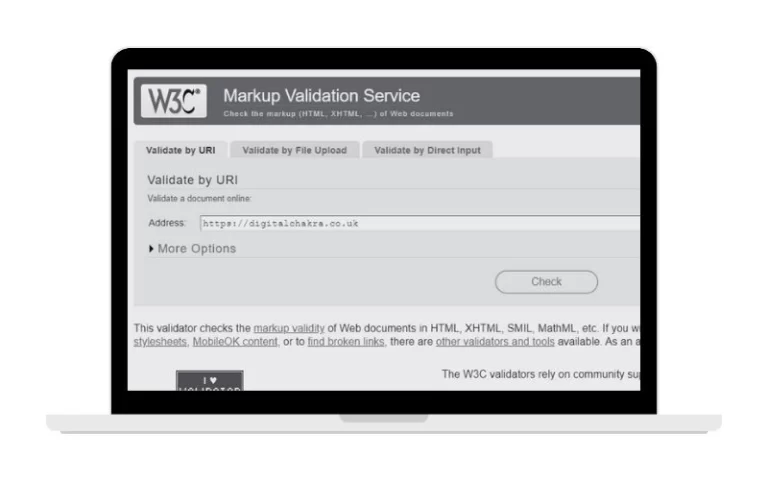
10. Set Up Appropriate Canonical URLs Wherever Needed
A canonical tag (the attribute rel=“canonical”) is an indication on a web page that simply tells the search spider. “I’m a duplicate of this other web page, and you can find it over here…”
You add this HTML element to the code of your web page.
The true purpose of this HTML element is to prevent duplicate content issues by telling the search engine spiders the version of a web page that you prefer to be shown the most.
Canonical URLs are important because they help to point out to the search engines the specific URL that you want shoppers to see in search results.
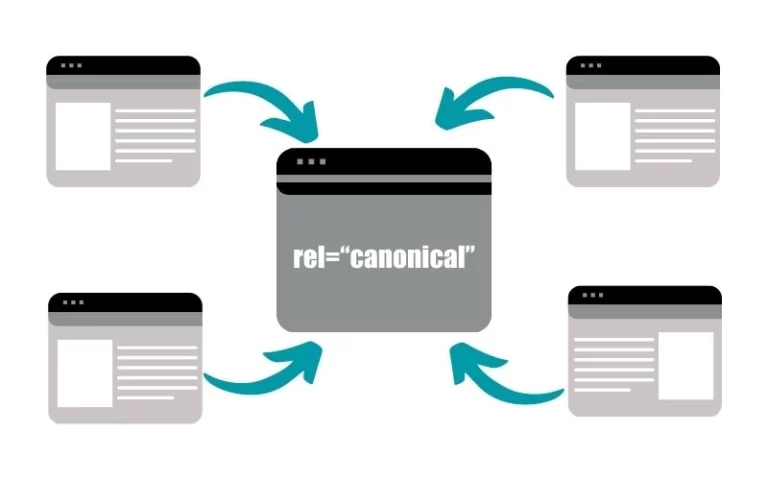
11. Set Up a Robots.txt File
Robots.txt is a file that instructs search engine spiders or web robots to visit or not visit (allow or block) specific pages or sections of your web store. The file lives at the root of your site.
Your Site: www.example-site.com
Your robots txt file: www.example.com/robots.txt
All major search engines, such as Google, Yahoo, Bing, DuckDuckGo, and Baidu acknowledge and honour the requests on your Robots.txt file.
Your eCommerce store will need a robots.txt file when you don’t want search engine spiders to automatically index your web pages that are simply duplicate versions of other web pages or want to restrict access to certain sections of your site such as the admin section, customer login pages, shopping cart etc.
Creating a robots.txt file is easy. You can use a plain text document to create one for your eCommerce web store in 5 simple steps:
1. Create a file titled robots.txt
2. Add rules to your robots.txt file
3. Upload it to the root of your website. Guidance on how to do this should be available with your Hosting Company
4. Test your robots.txt file using the robots.txt tester
5. After uploading & testing your robots.txt file, Google & other search engine crawlers will automatically find & start using it

12. Set Up and Submit an XML Sitemap
An XML sitemap will give search engines a comprehensive list of all the pages on your eCommerce store.
With a sitemap, you’re telling Search Engines which URLs you’d like to show in search results. A sitemap also contains metadata about each page such as change frequency, last modified date and priority.
You definitely need a sitemap if the number of URLs on your eCommerce store exceeds 100 and if there’s extensive internal linking.
There are various ways to create an XML Sitemap for eCommerce:
1. If your e-commerce site is set up using a Content Management System (CMS) such as Woocommerce, Wix or Shopify, the CMS will automatically generate a Sitemap and make it available to search engines.
2. For very small sites (with less than a dozen URLs) you can manually create an XML sitemap, using the official Sitemaps format.
3. Free Sitemap Generators also offer a simple, easy way to create an XML sitemap for small ecommerce sites
4. Large, custom-built ecommerce sites may require developer help if it’s not possible to use one of the above solutions. First, extract your site’s URLs from the database. Next, export the URLs into a csv or text file. Finally, have your developer write code for the sitemap.

On-Page ecommerce SEO Checklist
13. Create Unique Title Tags
The title tag of your web page is possibly one of the most crucial on-page ranking factors. And the good news is you have full control over this all-important ecommerce SEO element.
The title is the main component of your web store’s listing. On the Search Engine Results Page (SERP), it shows up prominently right at the top in blue font. And it’s hyperlinked back to your web store.
Take the time to write unique titles for each one of your eCommerce web pages. Make sure that the title tag describes accurately the content on that individual page. Use your target keyword on the title tag, but avoid overdoing it.

14. Create Unique Meta Description Tags for Each Page
A meta description is an HTML tag. This 160-character snippet describes the content of your web page.
The meta description presents you with an opportunity to convince shoppers that your web page offers what they are looking for. So, don’t make the mistake of one meta description repeating the same thing over and over again across all the pages of your web store.
The primary purpose of a meta description is to generate click-throughs via search engine results.
The benefit of creating unique meta description tags for each web page on your store is obvious.
More shoppers will click on your results. And this action of better click-through is enough for your web page to earn a higher rank in search results.
15. Optimise Header Tags Per Page
Header tags indicate the beginning of a new section on your web page. For example, the title of this subsection is a header. When you optimise header tags – H1, H2, H3, H4, H5 and H6 – you help search engines to understand your web pages better.
The best way to optimise the H1 tags is to integrate your primary keywords into them.
This way of integrating keywords will help search engines understand the context of your web page.
For all other header tags including H2, H3, H4, H5 and H6, integrate other important keywords to rank for them, as well.
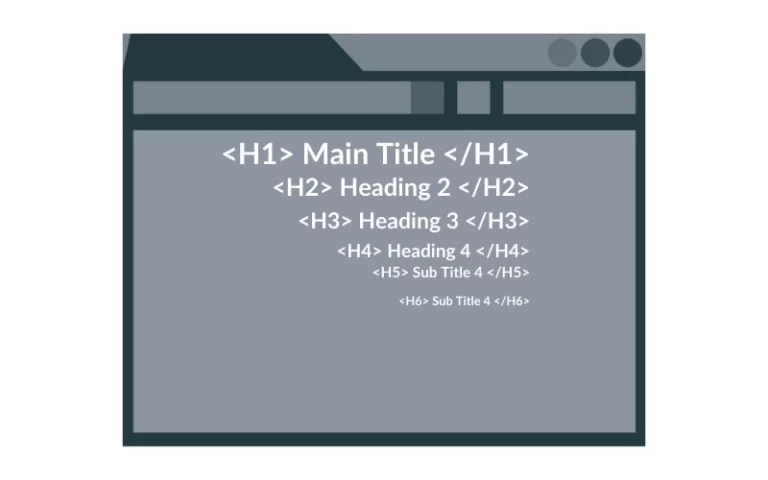
16. Optimise Image Alt-Tags
Alt tag – also labelled alt text, alt description or alt attribute – provides a short description of an image on your web store.
Alt tags are HTML attributes applied to image tags. They are needed for images because search engine spiders cannot interpret images accurately in their absence. But images can and do pull in shoppers from Image Search Results.
An alt tag presents a text that search engine spiders can read. Hence, an image with an SEO-optimised alt tag will ensure that the web page will be indexed and ranked.
Adding an alt tag to an image is pretty simple. You just need to add or edit it in the HTML code of the inserted image on your web page.
Make sure that every image on your web store has a unique alt tag. Include the keywords that best describe your image.
17. Optimise the Content for Both Search Algorithms and Humans
Search algorithms and humans analyse the same piece of text in completely different ways. Search engines typically prioritise the keywords that you place right at the beginning of your copy – the URL, page title and first paragraph.
Rank Math and Yoast SEO are two freemium WordPress plugins that will help you in optimising your web content for search engines.
(The paid version of Rank Math has some great advanced features and is also much lighter on the pocket.)
The only way you can do this successfully is by providing useful information to them.
When you write for humans, you need to write in plain English. Focus on persuading visitors to take a specific action. Keep your sentences and paragraphs short. Use subheadings to split big blocks of text.

18. Set Up Internal Linking Across Pages
An internal link is a link from one page on your ecommerce store to another. Both search engines and shoppers on your web store use links to find content.
Search engine spiders can understand the relationship between the different pages, posts and content on your web store by following links. This way, search engines find out the pages on your eCommerce store that cover similar subject matter.
You can add links within your content. These links are called contextual links, and they point shoppers on your web store to interesting and related content.
Internal linking is an SEO factor that is totally under your control.
Search engines will consider a web page to be more important when that page has more links. So with the right internal linking across pages, you can guide search engines and shoppers to the most important pages on your web store.

Technical ecommerce SEO Checklist
19. Check for Crawl Issues and Fix Them
In an earlier step, we had discussed setting up your business in Google Search Console.
You will get notified when Search Console faces any crawl or indexing issues with your online store. This means search engines are not able to understand your site properly and that you need to fix the issues immediately for your site to show up in search results.
20. Add Schema Markup
Schema markup is a piece of code that you add to your web pages to help search engines understand the content on your pages better. ecommerce businesses can leverage different types of schema-markup including products, reviews, FAQs and articles.
Adding schema markup will improve your site’s ranking in search results. For online stores, having rich review snippets can be incredibly powerful. Such snippets differentiate you from competitors and improve click-through rates and conversions.
21. Ensure your Site is Mobile-Friendly
With mobile phones being the primary device of choice for a large majority of users, it is reasonable and expected that you optimise your site for mobile usability.
In March 2020, Google announced mobile-first indexing for the whole web. Therefore, you need to ensure your users can navigate through your online store easily using mobile devices such as smartphones and tablets.
22. Improve the Page Load Speed
Page load speed is the time taken to display all the content on a specific web page from the time a shopper clicks on a page link on your web store to when the page is fully loaded in the shopper’s browser.
For an ecommerce website, the ideal page load speed is less than 2 seconds. But Google aims for a page load speed of 0.5 seconds. Page load speed is critical because shoppers will exit your store if a page takes more than 3 seconds to load.
Google PageSpeed Insights (PSI) tool will indicate how well your web page ranks based on page load speed. This tool gives useful suggestions on different ways you could improve page load speed.

Off-Site ecommerce SEO Checklist
23. Create a Google My Business Listing
Google My Business (GMB), also called Google Business Profile is a free tool that allows you to promote your business information on Google Maps and Local Search Results.
This tool enables you to post updates to your web store profile page, add media and product images, add product categories, connect with your customers, and see how shoppers are interacting with your web store on Google.
A GMB account lets your business show up in local search results when shoppers in your serviceable areas are looking for products that you sell.
Create a comprehensive GMB account and attract, engage, and convert new shoppers right away.

24. Create a Bing Business Listing
Bing Places for Business, a free local business directory, allows you to add your web store to Bing so that shoppers can find it in searches.
This business listing enables you to enjoy improved search rankings and provides shoppers with accurate information about your web store.
Create a Bing Places for Business listing and establish a solid online reputation.
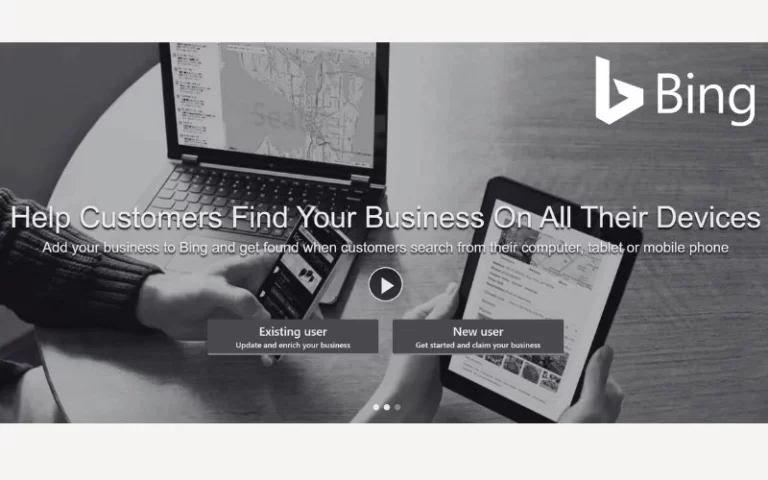
25. other social media listings
With more than 2.95 billion monthly active people using Facebook every month, it is the biggest Social Media Platform around. LinkedIn is the largest professional social media platform for talent discovery.
Instagram and Pinterest are visual discovery platforms targeting different age and gender demographics, surpassing 2 billion and 450 million respectively, as of this writing.
Creating Social Media Business Profiles on platforms, most relevant for you, is a free and easy way to allow prospects and customers to find your products online.
It helps strengthen a Brand’s Social Signals, and allows the Business to earn free traffic and backlinks from the platforms.
26. Create Business Listings in high level Directories
Adding your online store to National Business Directories is basic Off-Page SEO. It lays a foundational layer of backlinks and helps search engine algorithms pick up on these signals.
Search engines consider NAP – Name, Address and Phone Number – mentions of your web store as a trust signal.
Create a business listing in the top 10 UK Business Web Directories for your ecommerce store. This establishes you as a credible business entity and may allow you to get found for specific location-based search queries.
A few of the important Business Directories to list your ecommerce Site:
- LinkedIn Business Listing
- BingPlaces For Business
- Yelp Business
- MapQuest
- YellowPages
- Manta
- Local
- CitySearch
- MerchantCircle
- FourSquare
Social Media Linking
27. Add Social Media Buttons to the Site
The primary aim of adding social media buttons on the pages of your ecommerce store is to generate brand awareness. You are encouraging shoppers to share content. This cost-effective way of getting your brand in front of a wider audience demands minimal time and effort.
Social media share buttons are an important element of small business SEO. Make sure to add only the most important and relevant social media buttons that align with your Business’s Marketing.
28. Link to Social Media Pages from the Site
Linking to your social media pages from your store is another cost-effective way of making it easier for shoppers to find your store. The links improve the authenticity of your brand. You can also connect with shoppers in a more meaningful way and show them you are trustworthy.
Increase your store’s search visibility by adding links to your social media pages from your store.

This Ecommerce seo checklist covers all the bases to improve your site’s presence with search engines.
If you follow along and complete all the steps, you’re guaranteed to see some initial SEO traction. As with all things in life, consistency matters – SEO isn’t a one-time set-it-and-forget-it marketing channel. So, you need to keep working on optimising your Store.
At Digital Chakra, we offer affordable eCommerce SEO Technical Audits and SEO Monthly Retainer Packages. Feel free to get in touch to request a quote or to claim a Free 15-Point SEO Health Scan.


Sorry, the comment form is closed at this time.